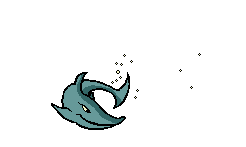
Ocean Life

Background Information
There are many tales about huge monsters living in the deep waters of the ocean. Today we know that they are not monsters, but incredible ocean dwellers.
The ocean is home to many small plants and animals as well. Some are so tiny that they can be seen only with a very powerful microscope. Everything in the ocean is dependent upon the sun. Believe it or not sunlight is converted into food by phytoplankton. This phytoplankton is eaten by animal-like plankton. Plankton are so tiny they cannot be seen with the naked eye. This conversion of the sun's energy to food is the beginning of the ocean's first food chain.
On the ocean bottom near the shore, there are many plants and animals. Here the sunlight reaches the bottom and many plants are able to grow. In the deeper parts of the ocean where light does not reach, there is little plant growth.
Many animals live in the water near the shore. Crabs, lobster and shrimp move along the ocean bottom looking for food. Fish also swim along the bottom. They all eat plankton that falls from the surface. They also eat parts of other ocean animal. The starfish uses its long arms to pry open clams and scallops. The sea anemone sits on the ocean bottom waiting for a fish to fall prey to its poisonous arms. It looks more like a plant than an animal.
Fish eat other fish to stay alive. Large fish eat smaller ones, which eat smaller ones, which eat still smaller ones. This eating pattern is called a food chain. This can be described as "who eats whom." Plankton would be found on the bottom of the food chain and whales would be at the top.
| Lesson Plan #5
|
Activities #5
Biggest, Smallest, Fastest, Deepest: Marine Animal Records
|
| Printables | Additional Resources |